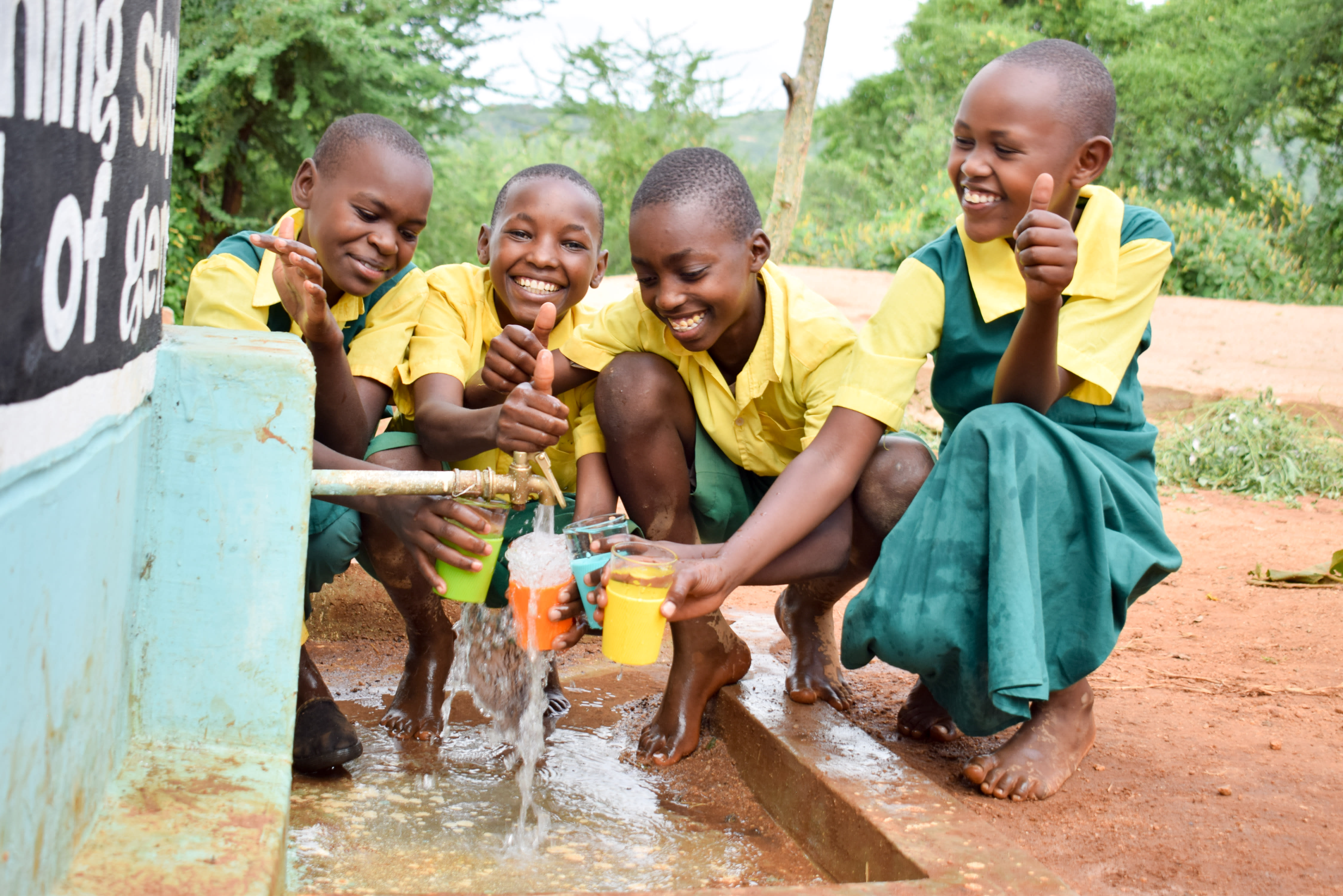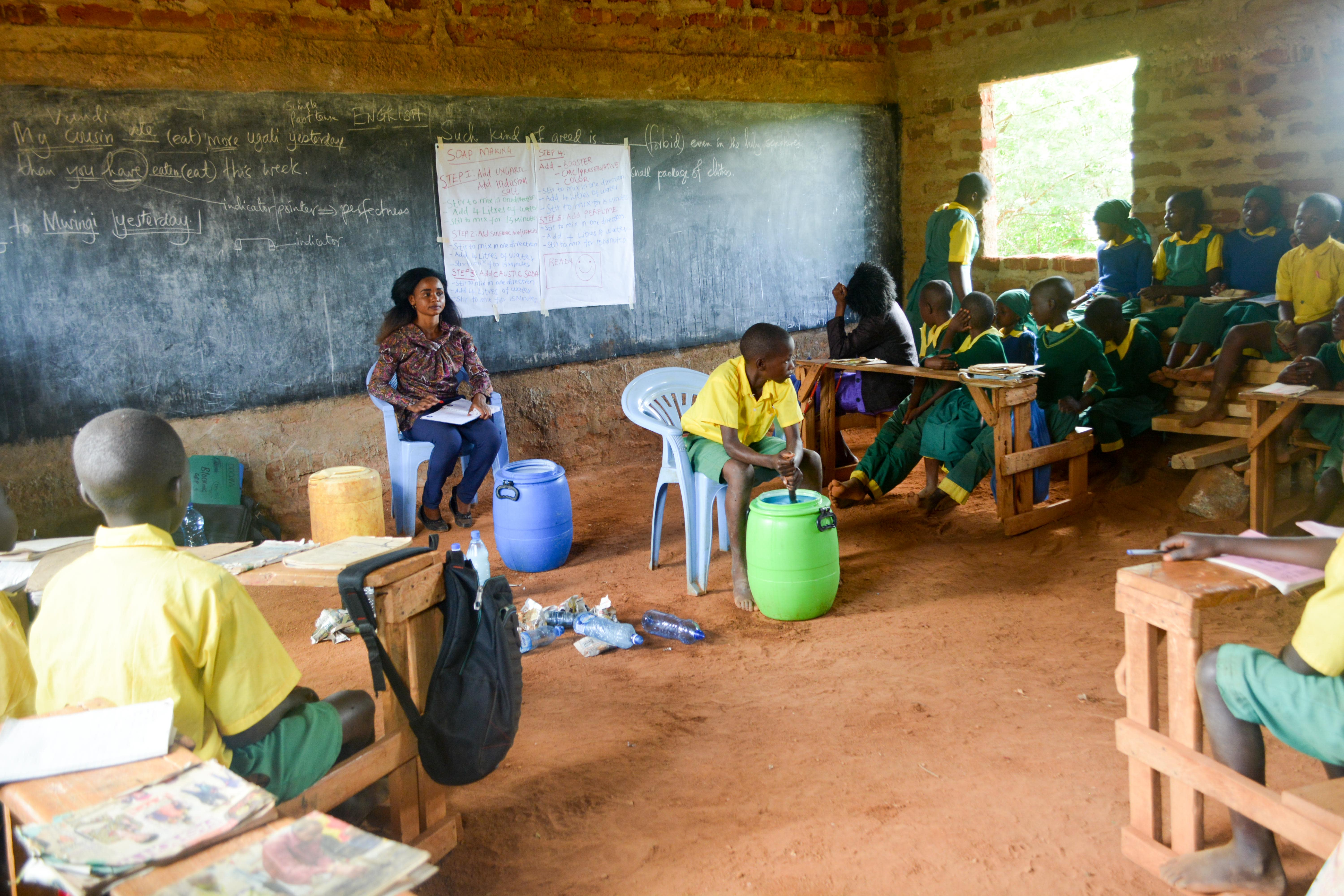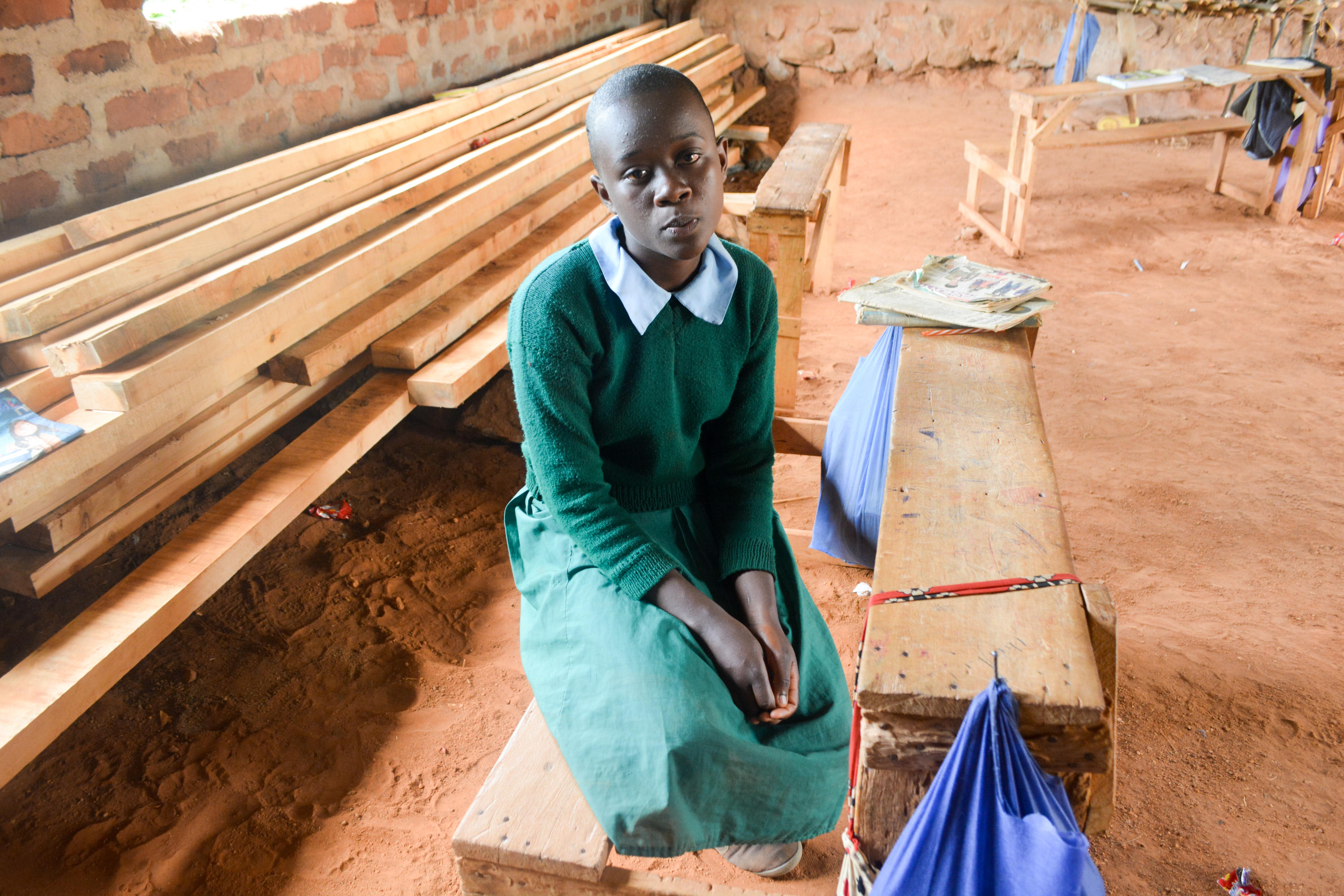Nzalae Primary School is located in a dry, rural area dotted only by a few trees. The school compound itself is made up of a few brick buildings - mainly, seven classrooms. There's an open area where students to play, and a makeshift kitchen. The teachers don't have an office. The school was started in 2011 by community members who wanted to bring education closer to their children. Before Nzalae Primary, their children had to walk several kilometers every day.
Students arrive at school by 7am to clean classrooms and latrines before 8am study hall. Normal classes go from 8:20am to 3:10pm, when students are sent to the field for sports. Another hour study hall is required before students are dismissed at 5pm.
Water
Students and parents are required to carry enough water to get the school through each day. This water comes from holes dug in sandy riverbeds, where water used to flow. These water holes are shared by both people and livestock. But when the year is at its driest, people have to travel beyond the Mui River to find adequate water.
Parents bring along a donkey that can carry up to four 20-liter jerrycans of water. Their children come along with a two or three-liter jerrycan of their own, which will go to school with them.
Depending on just what the students bring has greatly crippled the school. Teachers and students alike go without lunch. Students arrive late because of the extra burden of finding enough water each morning. Headteacher Musyimi said, "Our school is challenged in terms of water access. We have gone many days without meals after failing to get water for cooking. Our stay here in school is miserable, the water we depend on is from scoop holes which run dry anytime without notice - and above all, the water is never clean nor trusted."
Sanitation
Since the school lacks a steady water supply, they can't sustain a hand-washing culture, clean latrines regularly, or mop classes. Some of the classes don't have cemented floors and are always dusty because there's no water to keep them smooth.
There are five latrines for the students, but they're filthy. Though they don't have water to clean them with, they throw ash down the pit to keep the smell down. There are no hand-washing stations. Headteacher Musyimi added, ""We are trying our best to maintain high levels of hygiene and sanitation in school within our means. We clean the compound daily, but water problems have rendered us toothless in terms of washing classes and latrines. They can only be swept because we have no water for effective cleaning."
Here's what we're going to do about it:
Training
Students and staff will be trained for one day. Those in attendance will form a school health club that will promote good hygiene and sanitation practices both at school and home. They will learn all of the steps to proper hand-washing, how to treat water, and how to keep their environment clean. The school will also be taught how to best oversee and maintain their new rainwater catchment tank and hand-washing stations.
Hand-Washing Stations
Three hand-washing stations will be delivered at the project’s completion. These are 1,000-liter plastic tanks fitted with four taps. The health club and school management will be responsible for making sure tanks are filled with water and that a cleaning agent such as soap or ash is available.
Rainwater Catchment Tank
We will build a 104,000-liter rainwater catchment tank for this school. This water will benefit the students, teachers, and supplementary staff. Parents will mobilize the materials needed for construction, such as sand and stone. They will also lend some strong arms to help with the actual construction.
The huge capacity of this tank makes the others look tiny in comparison; 104,000 liters should be enough water to carry students and staff through the entire dry season. As soon as the tank has time to cure, it can begin to collect rainwater for drinking, cooking and cleaning!
This project is a part of our shared program with Africa Sand Dam Foundation. Our team is pleased to provide the reports for this project (formatted and edited for readability) thanks to the hard work of our friends in Kenya.

 Rainwater Catchment
Rainwater Catchment
 Rehabilitation Project
Rehabilitation Project

































